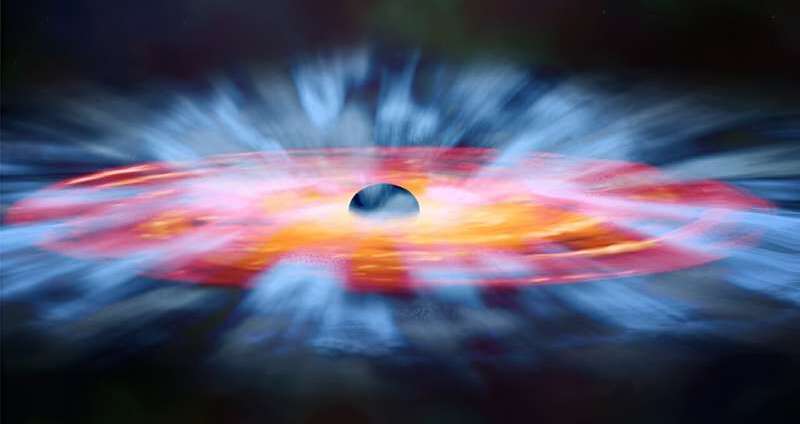Supermassive black holes are among the most impressive (and frightening) objects in the universe; Their mass is approximately one billion times the mass of the Sun. And we know they’ve been around for a long time. In fact, astronomers have discovered extremely bright compact sources at the centers of galaxies known as quasars (rapidly accumulating supermassive black holes) when the universe was less than 1 billion years old.
Our new study, published in Astrophysical Journal Letters, used observations from the Hubble Space Telescope to show that there were many more (much less luminous) black holes in the early universe than previously thought. Surprisingly, this may help us understand how they form and why many of them appear larger than expected.
Black holes grow by absorbing matter from their surroundings in a process known as accretion. This creates a huge amount of radiation. The pressure of this radiation places a fundamental limit on the growth rate of black holes. Scientists therefore faced a challenge in explaining these first massive quasars: They must have either grown faster than physically possible, since they did not have much cosmic time to feed, or they must have been born surprisingly massive.
So how do black holes form? There are several possibilities. The first of these is that primordial black holes existed shortly after the Big Bang. Although this is possible for low-mass black holes, according to the Standard Model of cosmology, high-mass black holes cannot form in significant numbers.
Black holes can certainly form in the final stages of the short lives of some normally massive stars (now confirmed by gravitational wave astronomy). Such black holes could in principle grow rapidly if they formed in extremely dense star clusters where stars and black holes could merge. It is these “grains of stellar mass” of black holes that must grow very quickly.
An alternative is that they may form from a “heavy seed” with a mass approximately 1000 times that of known massive stars. One such mechanism is “direct collapse,” in which early structures of an unknown invisible substance known as dark matter hold clouds of gas together, while background radiation prevents them from forming stars. Instead they collapsed into black holes.
The problem is that only a small number of dark matter halos grow large enough to form such seeds. So this only works as an explanation if early black holes are rare enough.
Too many black holes
For years, we’ve had a good picture of how many galaxies existed in the first billion years of cosmic time. But detecting black holes in these environments was extremely difficult (only glowing quasars could be confirmed).
Although black holes grow by swallowing surrounding matter, this does not happen at a constant rate; They break down their nutrients into “food”, causing their brightness to change over time. We observed changes in the brightness of some of the oldest galaxies over a 15-year period and used this to create a new count of the number of black holes. It turns out that ordinary early galaxies contain several times more black holes than we first thought.
Other recent pioneering studies with the James Webb Space Telescope (JSTW) have begun to reach similar conclusions. Overall, we have more black holes than could be formed by direct collapse.
There is another, more exotic way to create black holes that are both large and capable of producing abundant seeds. Stars are formed by the gravitational compression of gas clouds: If a significant number of dark matter particles can be captured during the compression stage, the internal structure can be completely changed and nuclear ignition can be prevented.
Such growth can take many orders of magnitude longer than the typical lifetime of an ordinary star, allowing them to become much more massive. However, like ordinary stars and directly collapsing objects, nothing can ultimately resist the irresistible force of gravity. This means that these “dark stars” must also eventually collapse to form massive black holes.
We now believe that similar processes must have occurred to form the large number of black holes we observe in the newborn universe.
Plans for the future
Research into the early formation of black holes has transformed over the past two years, but in some ways the field is just getting started. New observatories in space, such as the Euclid mission or the Nancy Grace Roman Space Telescope, will add to our list of fainter early-stage quasars. The NewAthena mission and the square kilometer array in Australia and South Africa will enable us to understand many processes in the early days of black holes.
But it’s really JWST that we need to watch in the near future. With its imaging and tracking sensitivity, as well as spectroscopic capabilities to observe very faint black hole activity, we expect to actually record the number of black holes during the formation of the first galaxies within the next five years.
We can even observe the formation of a black hole in situ by observing explosions associated with the collapse of the first virgin stars. Models say this is possible, but it will require a coordinated and focused effort from astronomers.













